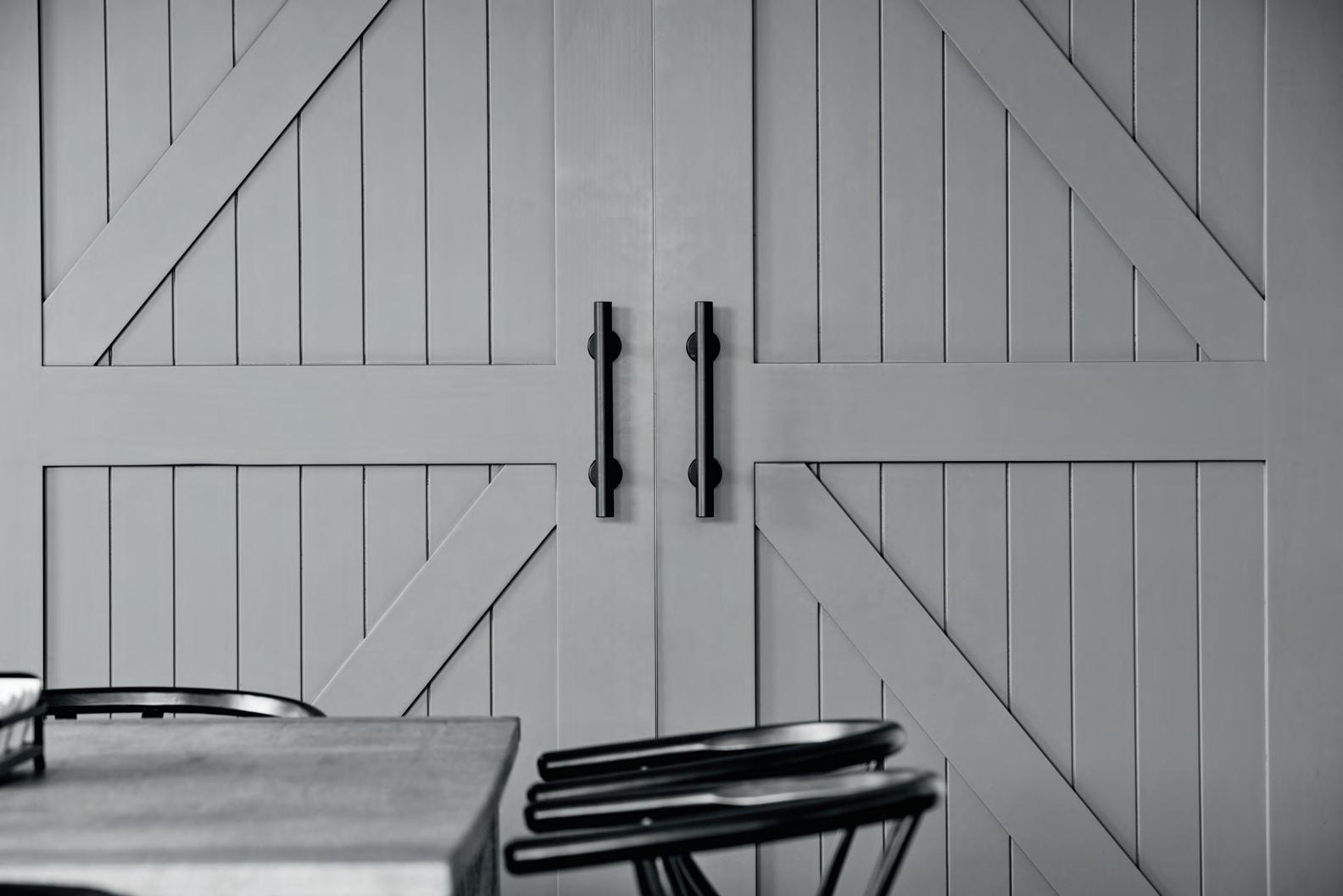TE WHARE NUI O TUTEATA showcasing innovation
“Te
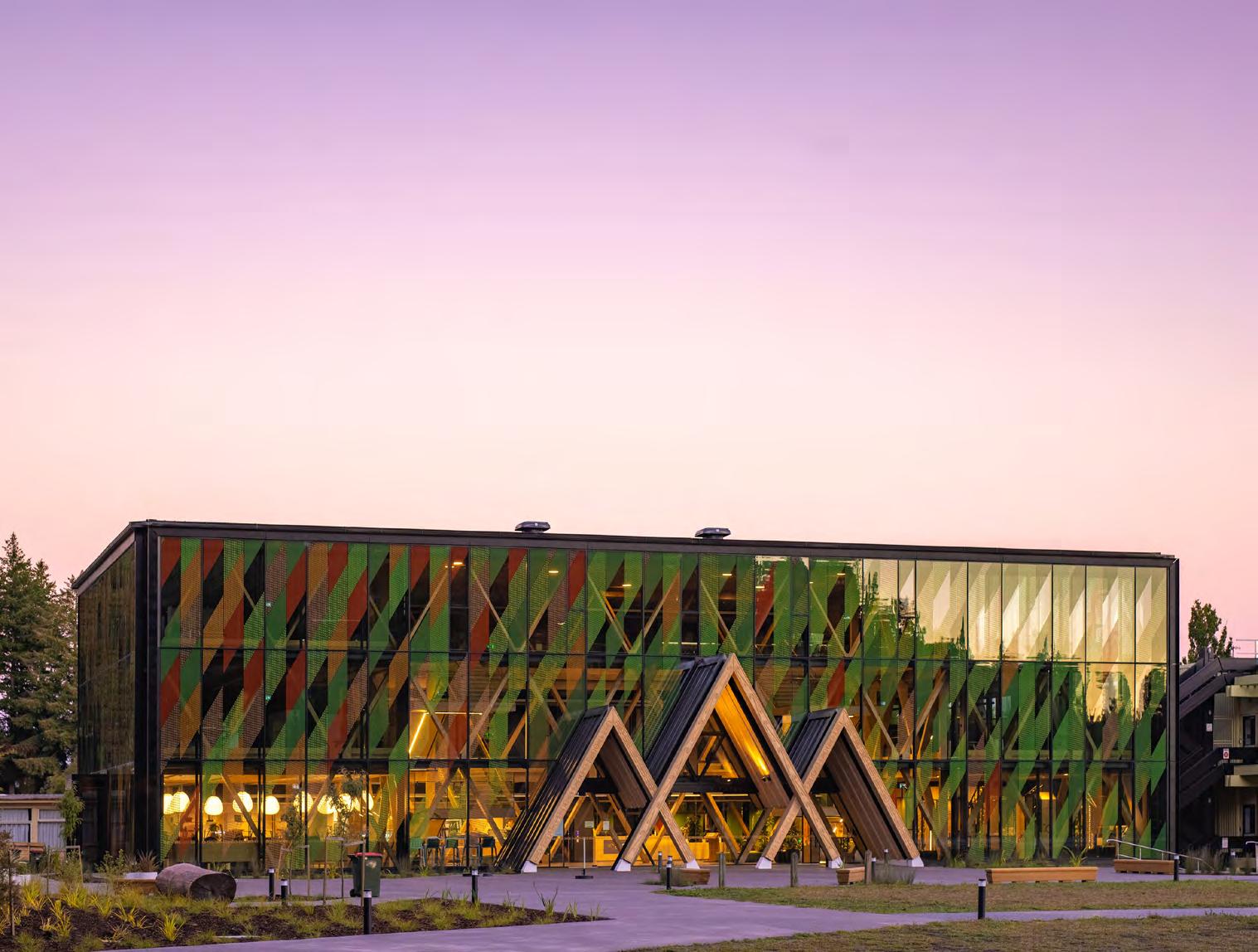

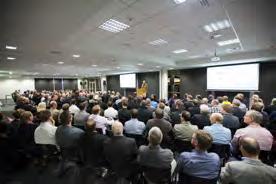



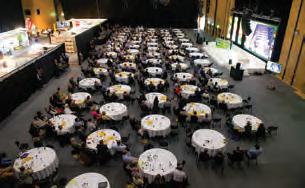




















































“Te


























































The kiwifruit sector is poised to break records this season, with an estimated crop volume of 177.5 million trays putting it ahead of estimates made only three years ago.
TBy RICHARD RENNIE
he
crop is a lift of 13 percent on last year and also has SunGold fruit outstripping Green for the first time, with estimates of 100 million trays against 72 million Green. For the first time this season, the long-awaited Red fruit will also be available for purchase both here and in selected south-east Asian markets.
Well-timed rain
A relatively generous growing season with well-timed rain over Summer has ensured crop volume and quality is exceeding expectations, and there has been a considerable lift on the past two years where drought influence had impacted crop size.
Zespri’s global supply manager
In 2018 an industry commissioned report on labour needs for the sector estimated there would be 190 million trays of kiwifruit to harvest by 2027 that would require a labour force of 23,000.

Alastair Hulbert says both Zespri and post-harvest processors have made adjustments to their storage infrastructure to accommodate the lift in fruit volumes.
This also includes the recent commissioning of the first of three new dedicated kiwifruit charter “reefer” ships and another specialist fruit transport ship usually used to ship bananas from Ecuador.
For the first time this season, the longawaited Red fruit will also be available for purchase both here and in selected southeast Asian markets.
However, another year of 20192020 growth rates will push the sector well over that mark five years early, in 2022. The industry’s goal of achieving $4 billion of sales by 2025 also looks assured.
The surge in volumes has industry executives feeling relatively comfortable about the task ahead. Hulbert says having the chartered ships committed to export destinations has taken a significant logistics weight off Zespri’s shoulders.
“Given the logistics issues around the world, having dedicated ships is like a type of insurance and gives us flexibility.”
The industry has long resisted the move to containerisation, with about 70 percent of the crop sent via reefer ships.
That confidence is also secured by strong global demand for the fruit, with consumers concerned about immunity and virus resistance, choosing high vitamin C fruit in the past year.
The result has been some larger but relatively stable markets like Japan and the European Union have surged ahead in demand growth.
The EU has reported growth from 55 million trays a year to 66 million,









while Japan – long moribund at under 20 million trays – is now selling 30 million and is one of Zespri’s top three “20-million plus” country markets, alongside Spain and China.
US sales, while relatively small at 8 million trays a year, are building thanks to investment in a Zespri office on the West Coast.
China remains the giant in the room for kiwifruit sales, accounting for almost $1 billion of Zespri’s $3 billion revenue in 2019-2020, and for sales of about 35 million trays.
The growth in crop volume has also been attributed to New Zealand growers getting better and better at growing the high value SunGold crop, with yields of 15,000 trays a hectare possible.
Year-round shelf space has also




played a part in securing year round sales, with about 10 percent of Zespri’s crop sold in China coming from off-season Italian fruit.
The Northern Hemisphere supply is being buoyed by more Green fruit out of Greece, proving to be something of a surprise performer for the marketer.
Hulbert says the country’s infrastructure for fruit growing and handling has been progressively improving, with about a third of Zespri’s licensed Green crop coming out of Greece, and likely to continue growing.
Italy continues to supply the bulk of the SunGold crop, and overall there is 4000ha in the gold fruit throughout Europe, compared to 6700ha here in New Zealand.
www.bopbusinessnews.co.nz
PUBLISHER
Alan Neben
Ph: (07) 838 1333 Mob: 021 733 536
Email: alan@bopbusinessnews.co.nz
EDITOR
David Porter
Mob: 021 884 858
Email: david@bopbusinessnews.co.nz
PRODUCTION
Copy/Proofs/Graphic Design
Times Media – Clare McGillivray
Ph: (09) 271 8067
Email: clare@times.co.nz
BUSINESS DIRECTOR
Pete Wales
Mob: 022 495 9248
Email: pete@bopbusinessnews.co.nz
EDITORIAL:
News releases/Photos/Letters: david@bopbusinessnews.co.nz
GENERAL INQUIRIES: info@bopbusinessnews.co.nz
Bay of Plenty Business News has a circulation of 8000, distributed throughout Bay of Plenty between Waihi and Opotiki including Rotorua and Taupo, and to a subscription base. www.bopbusinessnews.co.nz
Bay of Plenty Business Publications 309/424 Maunganui Road, Mount Maunganui, 3116
Bay of Plenty Business Publications specialises in business publishing, advertising, design and print media services.
It was good to see Tauranga economic development agency Priority One offer a congratulatory boost in March to the newly appointed commissioners who are currently leading the city.
“The newly appointed Tauranga City Council Commission has made a number of key decisions for the city,” said Priority One in a recent statement.
“These decisions include a $20 million investment to overhaul waste services, a commitment to lease a purpose-built Civic Administration building on Devonport Road, a $47 million investment in a new Library & Civic Amenities Building in the CBD, and the proposed redevelopment of the Memorial Park pools.”
Priority One – in the name of new chair Simon Clarke – said the organisation had watched this progress with interest and wished to congrat ulate the four newly appointed Commissioners (led by for mer National Party MP Anne Tolley), on making bold, early and swift decisions on these key matters for Tauranga.
Says Clarke: “We recog nise that these decisions are significant, and they need to be made after care ful consideration including can vassing com munity views and it is inev itable that in
Priority One expects that Tauranga City Council will continue to make good progress in the coming months, leading to higher standards of living across our community in the future.”
some cases the outcomes will not suit everyone. However, the Commissioners need to be congratulated for acting swiftly and decisively.”
According to Clarke, Tauranga City Council Elected Members have been kicking around a number of options for the last five years.
“Indecision over that period has driven uncertainty into the CBD property market, which has sent the CBD into a downward spiral.
“The decisions made this week illustrate leadership and helps create certainty for other potential developments and downtown retailers. The commitments will also hopefully have a cascading effect for others to invest.”


Priority one chief executive Nigel Tutt told Bay of Plenty Business News that Priority One expects that Tauranga City Council will continue to make good progress in the coming months, leading to higher standards of living across our community in the future.
“We do expect the business community will meet the commissioners at some stage,” he said.
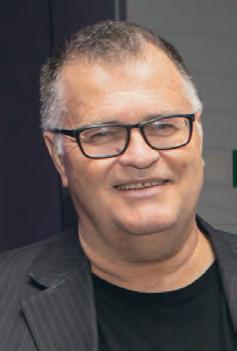
“It’s not appropriate right now. They’re buried in the Long Term Plan (LTP), but we do know they will want to meet with the business community after they’ve published the LTP (within the next couple of weeks) and have a bit of a yarn about it.”
Tutt said that in his view the commissioners were doing a good job. “So let’s hope they keep making those calls and just get on with it” Tutt said that in his view the decisions were not that difficult but had been procrastinated.
“Everything I’ve seen [is that] the council staff wants to get on with things … the problem has been at the governance level where they’ve continually got distracted by small issues or not managed to make decisions because it seems to be easier to kick them down the road.”
Bay of Plenty Business News welcomes more decision-making by the commissioners – and of course the active involvement of the business community.
We see this unique, stunning building as the catalyst by bringing scientists, business, industry and government together.”
Scion’s new building p6
I love being an instigator of change that refines our modern lifestyles and our commercial and residential living spaces.” – Mark Wassung
BOP Personality Profile p14

My sincere hope is that there is a commercial party that will come to the table and see this as a prospect for the town, so that we can retain those jobs and retain that mill as an operational mill.”
– MP Kiri Allan
Whakatane Mill p18


Global equity markets generally surged into the end of 2020, paused for breath in January, but kicked on again in February. Reporting season, when companies report their results to the market, generally saw profits stronger than anticipated.
Companies are benefiting from a combination of economic activity being better than expected, underpinned by government and central bank support, and significant cost savings. Across the market a majority of companies’ future profit and dividend forecasts were lifted by analysts.
A weak New Zealand market the exception
New Zealand equities underperformed major markets over the quarter, despite also delivering generally strong results over reporting season.
The NZX50 market index is dominated by a relatively small number of companies – the largest eight companies account for around half the index, and the largest 15 account for 71 percent.
What that means is any price changes (up or down) of these larger stocks has a significant impact on the overall index.
During the quarter we saw falls in some of New Zealand’s largest listed companies, for company or sector-specific reasons, plus a general pullback in defensive, dividend stocks which dominate the market.
Clean energy exchange traded funds’ (ETFs) buy high, sell low strategy has caused significant volatility in electricity stocks, particularly Meridian Energy (New Zealand’s largest listed company) and Contact Energy. More on this below.
Fisher & Paykel Healthcare, New Zealand’s second largest listed company, has been a beneficiary of Covid-19 with its products used in hospital therapy.
Recent vaccine rollouts and the resulting drop in hospitalisations has raised concerns of a decline in demand for Fisher
& Paykel’s products.
In February A2 Milk lowered revenue and earnings guidance for this year (for the third time). Border restrictions are limiting how much of A2’s product is getting to the key China market.
Why a Democrat “Blue Wave” rocketed and then rocked New Zealand electricity stocks
After winning the Presidency and the House of Representa tives in November, the Dem ocrats secured a “Blue Wave” (winning the Presidency, Senate, and House of Repre sentatives) in January with unexpected victories in both Georgia Senate runoffs.
The improved prospect of President Joe Biden being able to implement his green infrastructure plan compelled some to pile into clean energy investments.
One channel for this invest ment were two ETFs that track the S&P Global Clean Energy Index. This index contains 30 companies from around the world which are involved in clean energy-related busi nesses, including New Zea land’s Meridian Energy and Contact Energy.
As investment money flowed in, the ETF manag ers were forced to purchase Meridian and Contact shares in large volumes.
Because of Meridian and Contact’s relatively small size and particularly their low liquidity (how many shares typically trade on the market), short-term demand substan tially exceeded supply.
Meridian and Contact’s share prices jumped +27 per cent and +21 percent in a week. Share prices then quickly gave up these gains as ETF demand faded.
Obviously buying an
investment at a high price only to see it fall sharply afterwards is not good for any investor. This is what the surge in the clean energy ETF

> BY BRETT BELL-BOOTH
Investment Adviser with Forsyth Barr Limited in Tauranga, and an Authorised Financial Adviser. Phone (07) 577 5725 or email brett.bell-booth@forsythbarr.co.nz.
US at 15 percent are the leaders of the major economies. The early evidence is positive, suggesting that vaccines are at least as effective as the clinical trials concluded.
Policymakers (governments and central banks)
tive easing (literally digitally printing money).
Governments are injecting these funds into economies, with the United States leading the pack.
Most US citizens received US$600 cheques from the markets hit record highs. In March, market panic kicked in and we saw the fastest bear market in history (defined as a 20 percent or more decline in equity prices). Then, nearly as quickly, equity markets started to recover,

Meridian and Contact’s share prices jumped +27 percent and +21 percent in a week. Share prices then quickly gave up these gains as ETF demand faded.”




By DAVID PORTER
Scion chief executive officer Dr Julian Elder says Te Whare Nui o Tuteata is now the focal point of Scion’s campus. It is part of a broader campus redevelopment to foster innovation in the forestry, manufacturing, energy and sustainable land-use sectors.
Elder said the campus redevelopment programme is an upgrade to the site and delivers Scion fit-for-purpose facilities that reflect the world-class science we do here.
“Te Whare Nui o Tuteata is the centrepiece of the campus – a place to share information about all the things that can be made from trees, which is just about everything you can make from petrochemicals, and to get people thinking about what is possible.
“New Zealand needs to get started on transitioning to a circular bioeconomy which offers significant opportunities for New Zealand’s future through competitive advantages on a world stage.
“We see this unique, stunning building as the catalyst by bringing scientists, business, industry and government together.”
Focusing on wood Scion’s landmark building is unusual in that –
in keeping with Scion’s mandate to foster forest products – it is mostly a wooden building.
Elder said that constructing with sustainably grown timber was an obvious choice for Scion and has provided a very attractive and functional building.
“In New Zealand, there are lots of oppor-
We see this unique, stunning building as the catalyst by bringing scientists, business, industry and government together.”
tunities for sustainable buildings using engineered wood in the medium rise space.”
Te Whare Nui o Tuteata contains 454 cubic metres of wood. It takes only 35 minutes for New Zealand plantation forests to grow that volume of wood, which will continue to store

Proudly supporting Scion Crown Research Institute Scion has recently completed its new wooden building at its main campus in Rotorua, named by local iwi Te Whare Nui o Tuteata
carbon for the life of the building. Altogether, the building stores around 418 tonnes of carbon dioxide – equivalent to the amount of carbon dioxide that would be emitted by 160 return Auckland to London flights.
Cole Weston, the site project manager, who worked for main building contractor Watts & Hughes, noted that the obvious point of difference of the building is that it is a 90 percent timber structure.
“Engineered timber is fundamentally in the vein of Scion and what they want to showcase,” said Weston.
“It was definitely challenging – but it’s worked out really well. Timber is warm – you walk into it and it has a large atrium, which creates a sense of space.”
The building is 2000 square metres with the first and second floors open to the large, lightfilled atrium.
Innovative diagrid structure
Adam Dwen, a senior associate with RTA Studio, the architects who worked on the project, said the challenges creating the building included the initial site planning within the existing campus, through to the double skin façade and the highly innovative aspects of the timber diagrid structure.
Dwen and his colleagues at RTA Studio, as
well as Irving Smith Architects, noted some of the following points.
“As a new building inserted into an existing 50-year-old campus, the building achieves a lot in improving the sprawling site’s key adjacencies,” said Dwen.
He also said that the new building creates a prominent new campus arrival point at the end of Tītokorangi Drive, improving the visitor arrival experience and strengthening the public interface for Scion.
As a Crown Research Institute that specialises in technology development for the forestry industry, Scion drove the need to showcase wood as the building’s material of choice. Therefore, the key to the architecture was the resolution and expression of the timber diagrid structure.
“The three level, laminated veneer lumber structure, provides the gravity and lateral framework and demonstrates that timber structural buildings do not need to be designed like steel and concrete buildings,” said Dwen.
The mantra among the wider design team that arose through the process was, “the diagrid is king”, he said. The endless design decisions that are made in a project like this always take into consideration the effect on the diagrid and the intent for a clear expression of the timber structure throughout.
Continued on page 8
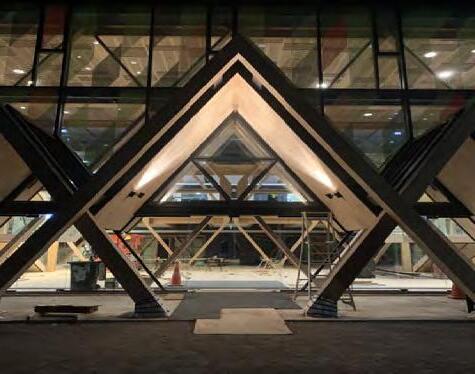


Dwen says the spatial form, structure and envelope are also integral with the building’s sustainability initiatives. Structural elements provide an organising element for services reticulation and the floor plate arrangement, and together with the double skin east facing glazed façade, work intrinsically with the mixed mode ventilation strategy.
Extensive glazing offers an abundance of natural light to limit active lighting with the design strategy of the facade pattern evoking a leafy forest, as well as being a climate modifier, vital for the building’s thermal strategy. Used in conjunction with low-e performance
glazing to regulate the internal temperature and loads, the pattern increases density to the north and western facades and alters in gradient up the height of the building to help regulate internal temperatures.
As assessed, the new Scion building achieves embodied carbon zero at the time of completion due to the extensive use of timber. Furthermore, the building was assessed to achieve the 2030 target set by the Royal Institute of British Architects of 500kg carbon dioxide per square metre for whole of life carbon. “It significantly contributes to New Zealand’s carbon-zero future,” says Dwen.
“The carbon-zero goal is achieved through


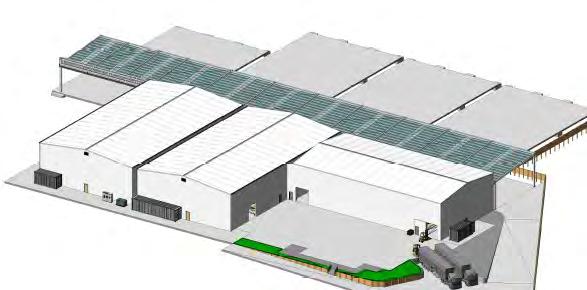
It significantly contributes to New Zealand’s carbonzero future.”
the use of engineered products made from sustainably grown pine and putting more thought into the operational characteristics of a building.”
Michael Perkins, a site contracts manager for Watts & Hughes, says the most challenging aspect of the build was its mainly timber construction. “We’ve got CLT (cross laminated timber) creating a floor structure that has been laminated three ways,” said Perkins. He acknowledged that it had been a difficult structure to build. One obvious factor was that when timber gets wet it tends to swell, making it more difficult to control.
“Everything was drawn up and manufac-
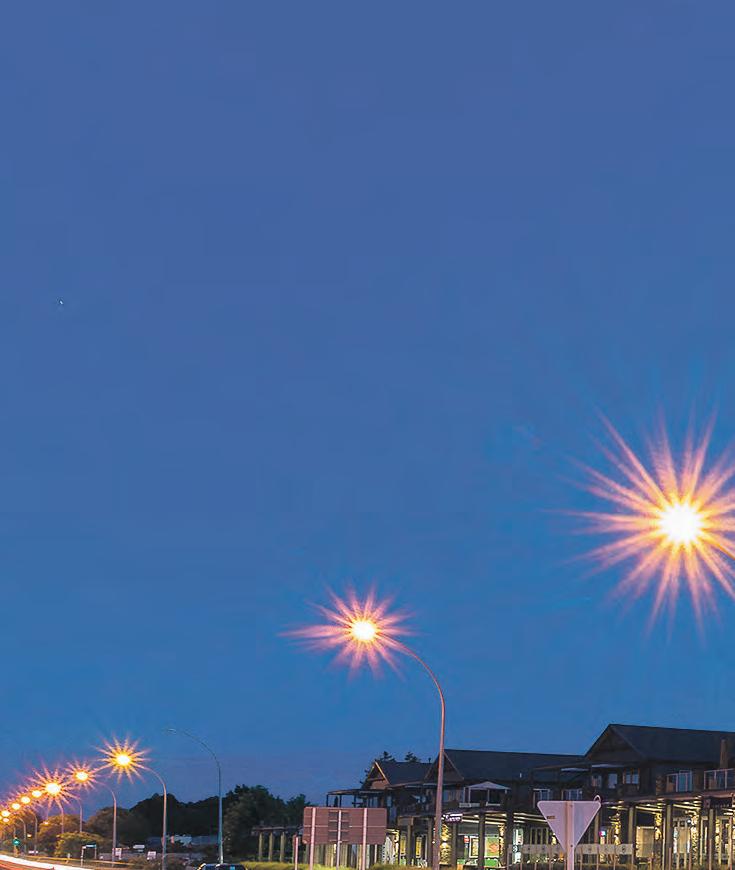



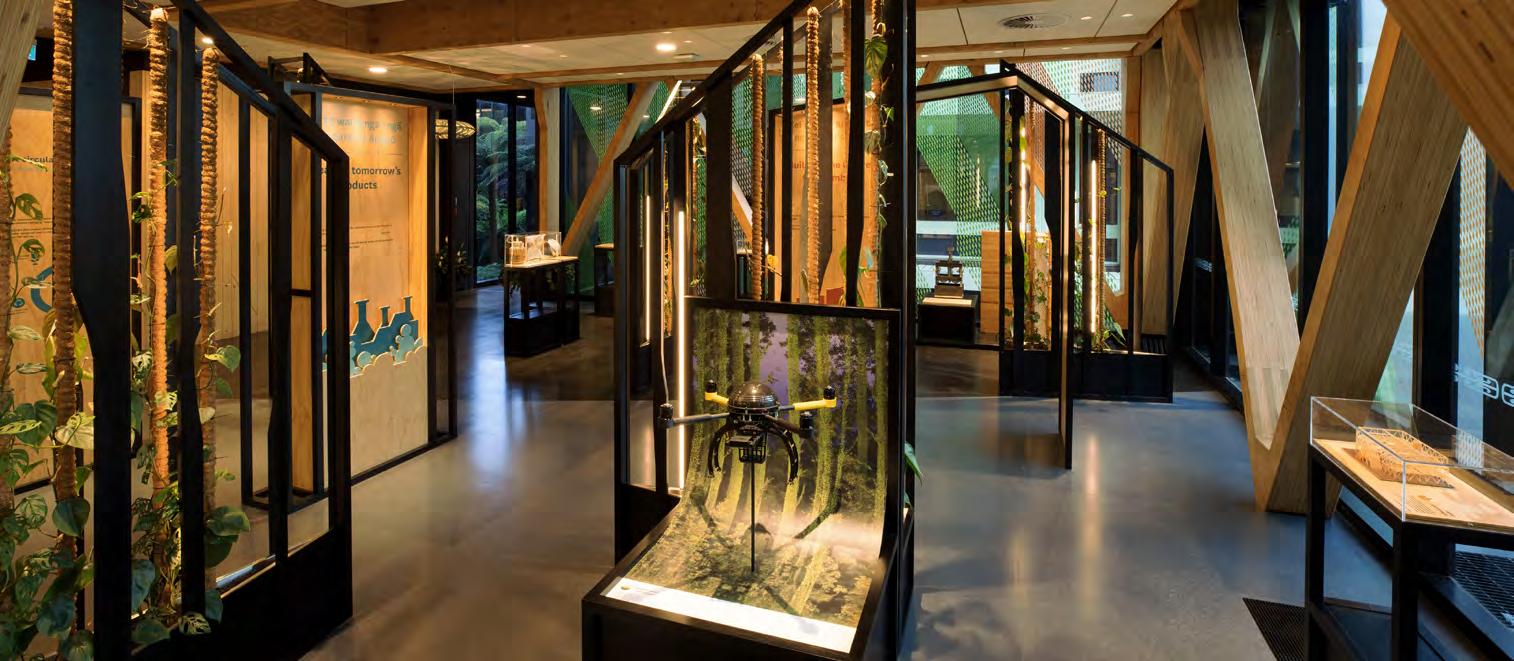
tured to shop drawings,” he said.
“It was brought to site and fitted together like a jigsaw puzzle – and it did.”
Perkins noted that, for example, the windows that went on at the front came down to a very tight V and fitted very well. The entire project took around 16 months to complete.
“I think most of the challenge was in getting the diagrids standing and braced,” he said.
With the large atrium in the centre, there was nothing to actually prop the diagrids off and the site team had to work through various scenarios of how they were going to prop it and hold it.
“It all fitted together nicely and we’re very
happy with the result.”
A $2.5 million grant from the Bay of Plenty Regional Council’s Regional Infrastructure Fund helped get the multi-million-dollar project underway.
This contribution was part of the contestable Regional Infrastructure Fund process, says chair Doug Leader. The fund was targeted at economic development, and the Scion building fitted the bill by demonstrating significant potential for improving the value of forestry and wood-derived products and services. Te Whare Nui o Tuteata could help create thousands of jobs and increase export earnings by up to $1 billion according to NZIER research.
A $2.5 million grant from the Bay of Plenty Regional Council’s Regional Infrastructure Fund helped get the multi-million-dollar project underway.”
Proud history of innovation
Elder said that Scion and its predecessors, have a proud history of innovation on this site, and Te Whare Nui o Tuteata, believed to be a world-first for a wooden diagrid building of its size, continues the innovation journey.
Sheryl Kirner of RDT Pacific is a highly experienced senior project manager and associate director based in Rotorua. Kirner who worked on the building, told Bay of Plenty Business News that Scion intended the building to be a collaborative, easy to access space for Scion and Te Papa Tipu Innovation Park
Continued on page 10
Oji Fibre Solutions is proud to partner with Scion on packaging research, environmental management, new products and technologies, and safe ways to control forestry pests. We wish to congratulate Scion on their new Te Whare Nui o Tuteata Innovation Hub.

Oji Fibre Solutions harnesses the strength of NZ-grown pine to produce market pulp, containerboard and fibrebased packaging; complimented with aligned logistics and recycling services.

The mana whenua; Ngāti Hurungaterangi, Ngāti Taeotu and Ngāti Te Kahu. Ngā Hapū e Toru, gifted the name Te Whare Nui o Tuteata in acknowledgement of their tupuna Tuteata. The name signifies a relationship with Scion which is one of rangatira to rangatira.
Veronica Butterworth, hapū representative, says “The gifting of our tupuna name signifies the beginning of a special relationship which is mutually beneficial to the hapū, and to Scion”.
Ngāti Hurungaterangi, gifted the
From page 9
tenants that encourages industry and science co-innovation while also serving as a welcoming gateway for visitors.
A visually striking structure, Te Whare Nui o Tuteata demonstrates the latest in engineered timber products and manufacturing techniques within its bold and innovative structural form, while using products that are designed for our climate and meet our preferences for sustainability and environmental performance.
The three-storey building comprises an exhibition area, public café, main reception, meeting rooms, and workspaces.
It also links to laboratories and testing facilities.
Developed in response to the local climate, typical office heating and cooling needs are
kōwhaiwhai designs for the building’s interior glass panelling. For the mana whenua the designs represent, guardianship, resilience and journeying forward. Ngā Hapū e Toru are visible in the building’s exterior, with the triple peaks over the entry way representing the three hapū. Grant Maranui, who has whakapapa to Ngāti Hurungaterangi, worked with the building’s architects to ensure the integrity of the kowhaiwhai designs applied to the triple peaks were maintained during the fabrication process.
significantly reduced, while further enhancing the connection to the forest.
Other energy saving features include natural ventilation, solar shading and LED lighting – all contributing to reducing plant and ongoing running costs.
Leslie Eckard, an electrical engineer working for long-time Scion consulting engineers PCS Ltd, told Bay of Plenty Business News the relationship dated back to the days when PCS Ltd encoded the whole live voltage infrastructure of the campus through to miscellaneous other projects.
“We’ve done numerous buildings over the years and I believe what makes this building special is that it is mainly timber with a beautiful laminated timber diagrid frame structure.”


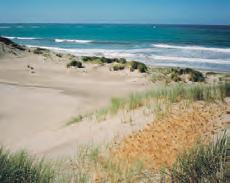


Assessments of ecological effects


Ecological restoration plans and implementation
Biodiversity survey and monitoring

Revegetation and planting

Riparian planting

Weed and pest control

Wetlands

Fauna survey and monitoring
Winner






Aiming for good light levels
“The services we provide are lighting and telecom distribution throughout the building,” said Eckard. “To make a building look good and meet the required standards for a good workplace you have to provide good light levels. The way we planned it we basically selected a colour temp (around 3000 kelvin) in most areas. The idea was to make the timber feel [like] wood.”
In the workspace areas the team used 4000 kelvin, a cooler white light, which makes the occupants feel good.
“The design philosophy when I looked at it suggested we should not put much lighting outside, for a number of reasons,” he said.
“We’ve got the redwood forest next door and we didn’t want to deter any wildlife with a massive exterior light source. The idea was to make it like glow like a lantern – for everything
to emanate from inside out.”
The contractors wanted to emphasize and blend in with the architecture, he said.
A highlight for Eckard are the Matariki-inspired lights in the atrium ceiling. The feature aims to simulate the Matariki star cluster. Different sizes of circular lights bring a sense of depth to the environment, and programming sequences creates the impression the lights are glittering in the sky.
Elder: “We are creating a unique and dynamic environment that will promote innovation, commercialisation and collaboration by bringing Scion staff and industry closer together.
“Engaging with the public is important too, and we will be opening up parts of the campus to our neighbours, local community and tourists,” said Dr Elder. Te Whare Nui o Tuteata is open to the public daily.









A close partnership with New Zealand’s key forest research institute is ensuring software company Integral is providing the industry with relevant, powerful software solutions for the sector.
Integral has been working alongside Scion for the past seven years, embedding a range of the institute’s past and present research and development work within its software tools. The result is a range of software that covers all aspects of forestry management, from planting to harvesting and logging operations.

Integral’s chief technology officer Anthony Ham says Integral is poised for a major re-investment into its key forestry software suite, Atlas GeoMaster.

As an operational tool for planning, managing, and reporting on all forest activity, it is the “go to” software option for most of New Zealand’s forestry sector.





Throw away the spreadsheets and have one source of truth.
• Schedule and monitor workflow by company, site and team members via dashboard and emails
• Trace issues by category, product and production batch
• Attach documents and photos to incident
“The mapping system ArcGiS that sits in GeoMaster is to be updated to ArcGiS-Pro. This will mean we can deliver a future-proofed system to our clients, with an upgraded mapping system, and capable of being cloud based.”



Anthony says Integral’s relationship with Scion is a rare and invaluable one for a software company.
Access to the latest developments on all aspects of forestry management is reflected in Integral’s suite of software resources. It has also helped Integral earn a reputation as a high-quality service provider, with forestry clients in Australia and South-east Asia using Integral systems.

• Unlimited incident categories: Complaints, R&M, Audits, H&S

• Investigation and close out details
• Potential to integrate with ERP, Production, CRM and other applications. We are offering for a limited time a free, no commitment, trial of our cloud and subscription based solution.


“Forest management and carbon monitoring are only increasing in their importance both here and abroad, and we see plenty of opportunity for our products globally in the years to come.”

Atlas applications we support include Geomaster, Forecaster, Harvest Manager, Harvest Scheduler, Folpi-xl, Cruiser, Aquire, SilviQC, PSP, YTM and more.
Visit our website and search for product or just type Forestry for more.










• A package designed to simplify the process of managing multiple shareholders associated with Maori Trusts, Private Companies and Co-operatives
• Share transactions are traceable to stand up to scrutiny of auditors
• Payment of dividends is easy and quick saving time and hassle
• Dividend re-investment functionality included
• Electronic document storage so important documents for shareholders are kept safe and all together
• Automated AML checking at the click of a button to save time and effort


The recent surge in new housing prices has triggered a response from the Labour Government. But the new policies, which aim to shift the balance of the market more in favour of first-time buyers, also risk bringing the market to “a more abrupt stop” than intended, according to one economist quoted by Stuff Business Editor Susan Edmunds.
By DAVID PORTER
The range of new measures that were announced at the end of March include investing NZ$3.8 billion for infrastructure, and an extension of the bright-line test, which means some investors may pay tax on their gains when they sell, and the removal of deductability.
The bright-line test has been extended from five to 10 years, excluding new builds, for property acquired on or after 27 March 2021 (Main homes and inherited property remain exempt).
Until now, investors have been able to claim back the interest cost of a home loan against the rent received on the property, cutting their tax bills. Deductions will not be allowed on properties bought after March 27. The amount that can be claimed on properties bought earlier will be reduced to zero over a period of four years.
Robertson was ‘too definitive’ Finance Minister Grant Robertson says he was “too definitive” when he ruled out changes to the bright-line test just before the election.
However, National leader Judith Collins says he simply lied and that Prime Minister Jacinda Ardern had broken a promise by introducing a “capital gains tax” after the Government announced its series of housing policy changes.
Robertson said the changes were about tilting the balance of the property market away from investors.
“Extending National’s bright-line
test and removing interest deduction loopholes for investors will dampen speculative demand and tilt the balance towards first home buyers,” he said.
“The New Zealand housing market has become the least affordable in the OECD. Taking action is in everyone’s interests as continuing to allow unsustainable house price growth could lead to a negative hit to the whole economy,” Robertson said.
Ardern described the new announcement as massive. ANZ chief
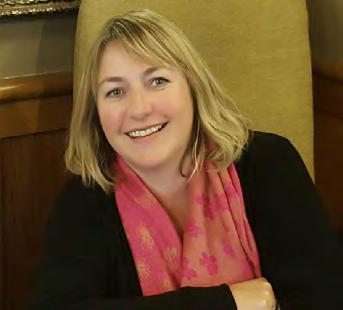
Every investor that runs their investments as a business will be looking at their financials.” –Sharon Cullwick
economist Sharon Zollner said that was a “massive” for the Government, because it was risking upsetting a large voting base.
The fact it was retrospective would mean large numbers of people would experience an increase in their tax bills.
Taxes could increase
NZ Property Investors Federation executive officer Sharon Cullwick said she estimated that the deductibility change would mean an extra $6000 a year in tax for the owner of a $600,000 house. But as interest rates rose, that amount would increase.
“Every investor that runs their investments as a business will be looking at their financials,” she said.
Some small-scale investors would decide it was not worth buying, she added. Cullwick said it was likely to mean fewer rental properties available in the market for middle-income families.
ASB’s Zollner said the result would probably mean more money went into other investments, which could boost financial markets.
“On a macroeconomic level, it’s very difficult to engineer a soft landing from a vertical take off … the risk is that they cause a more abrupt stop in the housing market than they were intending.
“And the housing market is the New Zealand economic story right now. In my view it’s well worth sacrificing a bit of economic activity at this point to head off house prices that are doing so much damage to our soci-


ety, and also our economy in so far as a boom and bust cycle is extremely unhelpful and that had been looking more likely by the day.
“But the risk is that they overachieve and the economy is still pretty vulnerable. A New Zealand economy with house prices going backwards looks and feels pretty different. But to be honest the prices have got so out of whack with incomes that house prices falls had been starting to look inevitable. Better to fall from a roof than a plane.”
Some investors might rush to sell, fearing a market crash, she said, but others might decide to stay in the market assuming the rule change would not stick. “There’s less incentive to buy a property now.”
Infometrics economist Brad Olsen was quoted by Stuff as saying the pol-

icy announcement was a “good start”. But he added: “No announcement the Government could make was going to change the housing market.” The money for infrastructure would be important because that had been a significant hurdle in getting building moving. “The Government has been told there was a problem there and has acted on it.”
He said he would expect to see investors quitting the market. The change to deductibility rules would change the equation for some people. “A few will be ringing their accountant to see what this means.”
Previous changes to the bright line test have taken effect some time after being proposed. Any investment property with a settlement date after Saturday late March will be hit by the new rules.

Extending National’s bright-line test and removing interest deduction loopholes for investors will dampen speculative demand and tilt the balance towards first home buyers.” – Grant Robertson

Trustpower Baypark is Tauranga’s Premier Venue for conferences, meetings, entertainment and exhibitions. It offers a complete package in one convenient location that features state of the art meeting rooms, in-house catering, audio visual services, professional conference organiser (PCO) and marketing/ promotional services.
Hybrid Minds NZ Tour 2021
Audiology Touring presents the kings of all things liquid, Hybrid Minds (UK) – NZ Tour 2021 on 4 April.
Over the past few years British drum & bass producers Hybrid Minds have broken out as one of the most important acts in the scene.
Defining a new era of liquid D&B, they flow between exquisite vocal melodies and high octane productions, creating the innovative and unique sound they’ve become known for.
Comprised of longtime friends Josh White and Matt Lowe, the boys work across everything together from studios at opposite ends of the country, taking in both their influences from all ends of the musical spectrum to create smooth sounding, yet addictively danceable tracks that are every bit as relevant for a main stage festival slot as they are at a late night afterparty.
After building up an ever-growing and dedicated fan base, the duo have witnessed a completely unique and organic explosion across every aspect of their career, and their success has seen them perform at some of the world’s biggest festivals, including Let It Roll, Liquicity, Rampage, and FM4 Festival in Austria.
The uncompromising beauty of their music, coupled with an unerring instinct for connecting with an audience, means that witnessing their DJ sets, often accompanied by regular MC Tempza, is an out of this world experience for all true D&B fans. (www.ticketfairy.com).
Based on the smash-hit DreamWorks animated motion picture, Madagascar The Musical follows all your favourite cracka-lackin’ friends as they escape from their home in New York’s Central Park Zoo.
Along the way they find themselves on an unexpected journey to the madcap world of King Julien’s Madagascar.
Alex the lion is the main attraction at New York’s Central Park Zoo. He and his best friends – Marty the zebra, Melman the giraffe and Gloria the hippo, have spent their whole lives in blissful captivity.
When a group of penguins decide they’ve had enough of the zoo and decide to escape, Marty makes his escape too.
Join Alex the Lion, Marty the Zebra, Melman the Giraffe, Gloria the hip hip Hippo and those hilarious, plotting penguins as they bound onto the stage in the musical adventure of a lifetime.
The international stage set, props and costumes from Madagascar
The Musical’s world tour are in New Zealand with an all-star local cast of professional actors, bringing the excitement of the movie to the stage.
Filled with outlandish characters, adventure galore and an upbeat score, you’ll have no choice but to ‘Move It, Move It!’.
The show runs for 75 minutes and is appropriate for children and adults alike. Tickets are on sale now for multiple shows from 23 – 25 April (www.eventfinda.co.nz).
Back in early 2003, drifting in New Zealand was just emerging from the underground into the world of motorsport.
Several Drifting teams from all over New Zealand came together to organise and regulate events nationwide, developing competition formats on race circuits and bringing Drifting off the back-streets.
With D1NZ now in its 17th season, the series has been propelled to the forefront of professional motorsport in the country, with more than half a million spectators coming through the gates, including hundreds of exhibitors, a long-standing nationwide television series, unprecedented awards and the largest drifting events ever witnessed by the New Zealand public.
D1NZ has taken the lead in this unique automotive culture, with drifting recognised as the fastest growing motor sports category in the world.
The Series has produced worldclass competition with many of New Zealand’s top drivers representing the country overseas with podium finishes in Australia, Japan, The USA, Thailand, Malaysia, Singapore, China and Europe.
The D1NZ Valvoline D1NZ Grand Finale will be in Tauranga this year on 30 April & 1 May.
Tauranga Home Show
The first Tauranga Home Show took place in May 2000 and has grown over more than two decades to become the huge exhibition you see today.

In the beginning, the focus was on making shows successful for exhibitors. This emphasis on relationships is the main business driver, and the reason why the Tauranga Home Show has been so successful.
The show has grown together with exhibitors and suppliers, with some current exhibitors on board since the first Tauranga Home Show. Visit the next Tauranga Home Show on the 7th, 8th & 9th May 2021.
Stormwater 2021 National Conference
Come and join us for our 20th anniversary – a message from Water New Zealand Chief Executive Gillian Blythe.
This conference is going to be a particularly auspicious occasion – 20
years is an important milestone and it will be the first time we will have been able to get together for two years. Covid meant we had to go fully online in 2020. We certainly welcome 2021.
Once again we have a great line up of speakers and events.
Keynote speakers will include co-founder of the US-based Coastwise Partners, Holly Greening. After a successful career as executive director and senior scientist of the Tampa Bay Estuary Programme, Holly, along with colleague, Rich Batiuk set up the Coastwise Partners, to help other coastal environment organisations around the world to succeed. Many of you will remember Rich Batiuk from our conference two years ago.
The 2021 Stormwater Conference is one you won’t want to miss.
This month we talk to Mark Wassung, Director of Design Engine Architects. Mark is a Tauranga Architect and Urban Designer, a self-proclaimed ‘futurist’ whose vision for the environment in which we live goes well beyond the award-winning buildings he and the Team have designed.
A Registered Architect in South Africa and New Zealand practicing for 25 years, Mark has been passionately involved with key infrastructure projects including his favourite, the Auckland International Airport between 1998 and 2002, which succeeded in making the Top 10 list of ‘Best Airports in the World.’
He talks fondly of his Hamilton Grand Design Project (top five in New Zealand for TVNZ’s “Art of the Architect” - Series 1, Episode 2, which is still available OnDemand), the location where he and his wife Abigail married and while working together on the successful project.
He believes opportunities for real progress abound in the Bay of Plenty right now and he’s not daunted about

swimming against the tide. Take the issue of the Government appointment of commissioners in Tauranga City: According to Wassung, “This presents a golden opportunity for real
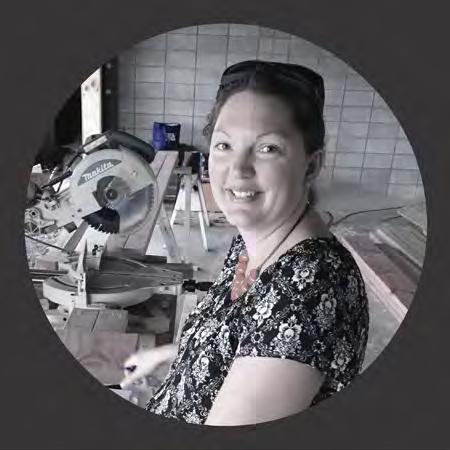
progress and decisiveness, without the baggage of political infighting!”
“I’ve met with the commissioners and they’re intelligent, articulate and enthusiastic about implementation of
infrastructure”.
“For a futurist like me this could be just the opportunity our city needs to reset the course for Tauranga to get back on the right track,” he hopes.
Three community-led design projects that their practice has been involved in: Tauranga CONNECT Multimodal Transport Network VISION 2020 to 2030 designed in 2016; Cameron Road Transport Corridor and Urban Intensification; and Rangiuru Log Transfer Station Road to Rail have shifted thinking and enabled exciting opportunities for infrastructure investment and business growth, attracting CIP Crown Insfrastructure Partners Funding to the region.
“Rapid population growth over the last 20 years, has made things extremely challenging as this has put pressure on our existing infrastructure which now needs urgent investment, before any further population growth.”
“Planning can’t just have a two year, or five year, or ten year horizon - it must always have an eye on the ‘far away’ because the ‘far away’ will eventually be the ‘up close,’” quips Wassung. “Planning means looking at the horizon and saying, “Lets make things better,”... that’s my space!”


Two other recently completed projects, the Mount Hot Pools Exterior Revitalisation and Baywave Massage Suite are the kind of projects he revels in, taking existing assets and enhancing them with clever, innovative and cost effective design techniques.
“I love being an instigator of change that refines our modern lifestyles and our commercial and residential living spaces.”
“That’s why I’m really enjoying my time on the refurbishment of Armitage Hotel (originally ‘Willow Park’), a Tauranga landmark. The concept is to work with the existing building and add amenity through clever urban design and architecture that acknowledges the past while making it modern, upmarket and connecting with people and the city.”
“As the region becomes a more popular destination, good quality hotel accommodation becomes a critical part of our infrastructure. I want visitors to remember their Tauranga stay for the feel-good experience of the great hotel as much as for its diverse culture, art, architecture, fishing and awesome bike rides.”
While Mark still loves the ‘bread and butter’ challenges of commercial, residential and revitalisation projects which dominate Design Engine Architect’s focus, he is equally excited by the big picture.
“I guess that’s why I put myself forward to be part of the Tauranga Art Gallery Trust Board, serving since
I love being an instigator of change that refines our modern lifestyles and
2017 as Trustee for three years and the fourth as Chair, and why I commit to be part of the numerous Council and Community workgroups with which I am involved. Positive change is something you make happen by listening, getting involved and looking at positive, creative solutions.”
Wassung believes it is Tauranga’s time for courageous, bold and transformational design and decision making by central government, local government, communities, planners, designers and architects to lead us into the future.
“No more paralysis by analysis and endless wasting of time and money on more reports. Let’s get on














with smart infrastructure, CBD revitalisation, multimodal transport network with connected centres”.
Wassung’s future projects include 3D-printed bus shelters and affordable housing, a 1000 year forest and

lake park for Kopurererua Valley, a cultural centre, and an intergenerational apartment building for seniors and students in the CBD.
Design is transferable across commercial, residential and city revital-
and

BBN’S GUIDE TO NEW PEOPLE AND NEW ROLES ACROSS BUSINESS IN THE BAY
To feature in New Appointments email us at new.appointments@bopbusinessnews.co.nz

Businesses across the Bay of Plenty continue to grow in 2021. This issue features new appointments in vermiculture, housing renovation and corporate services. Please contact us if your organisation has any exciting personnel changes you would like to share.
MyNoke is pleased to announce the appointment of Phil Holland as General Manager. Phil’s role will be to grow the MyNoke business to achieve New Zealand-wide coverage and to divert one million tonnes of organic waste and paper waste from landfills to the MyNoke Worm Farms, producing some 300,000 tonnes of vermicast for improving soil fertility. www.mynoke.co.nz


EY is pleased to welcome Gill Anstis to the Bay as a transfer from our Auckland office. Gill, a Chartered Accountant, joins us as an International Tax and Transaction Services Manager with over 15 years’ experience. Gill joined EY around three years ago from Scotland where she spent many years in a global tax role for a leading asset manager. This gives Gill a strong commercial perspective to help our clients in asking the better questions with a view to Building a Better Working World.
We know this land like the back of our hand – which means better outcomes for you.
Our vast local knowledge and experience is why we are one of the leading land development and land utilisation consultants in the Bay of Plenty. Every day we exceed expectations for our valued clients, delivering solutions that have a positive outcome for the places and communities that they, and we, call home.
Refresh Renovations are pleased to announce that Sharon Giblett has joined them as a Renovation Specialist/Franchise Manager in Tauranga.
Sharon brings a wealth of knowledge and experience to Refresh Renovations that will benefit her clients. She has a long-standing passion for property having renovated many homes of her own.
Her business background includes many years as a financial adviser where her clients trusted her to really understand their dreams and goals and then worked in partnership to put a plan in place to achieve those goals.
Combining this with her strong organisation, problem solving and project management skills, Sharon works with homeowners to achieve their home renovation goals whilst avoiding the pitfalls and wastage often experienced during renovations.
Sharon is excited for the journey ahead with Refresh and the many benefits it offers to clients. She looks forward to hearing your ideas, helping you with your renovation journey and transforming your home and garden into beautiful, functional spaces you will love.
Sharon welcomes the opportunity to visit your property to discuss options and ideas for your next project.

Your local land experts
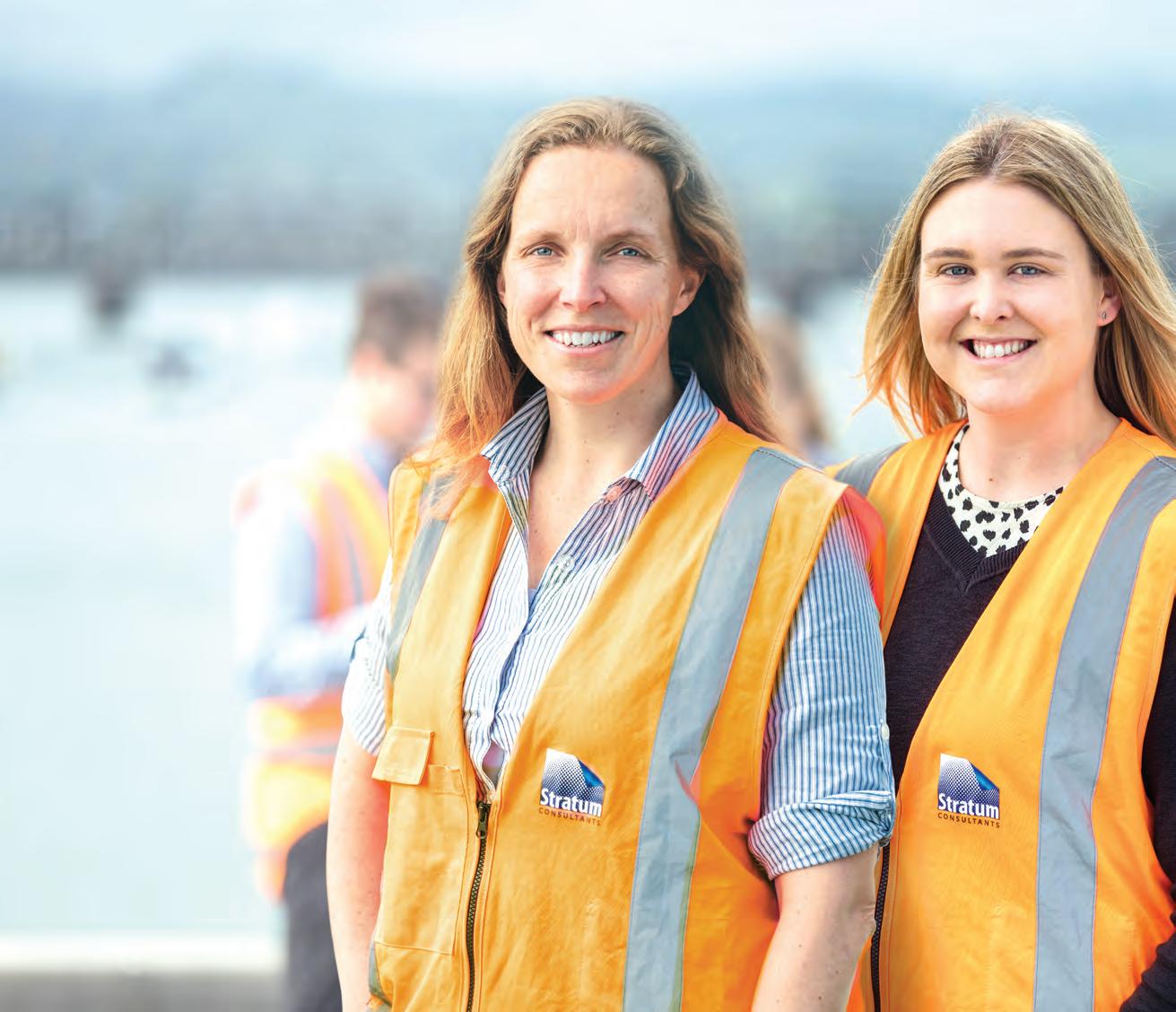



Whilst interest in becoming a franchisee entrepreneur is on the rise, we know this will not suit everyone and, as always we strongly suggest a robust due diligence process is undertaken.
However, we are seeing some trends in what people are raising as reasons to not pursue business ownership and I think it’s time that we called them out as they often confuse excuses with due diligence and validation.
We will wait and see what happens with Covid High on the list – if not the top reason that potential entrepreneurs use to rationalise not pursuing a franchised business – is the uncertainty around Covid-19. In fact, every time we have a change in Covid alert levels we see candidates instantly drop out of the process.
The pandemic has created uncertainly, but we are now definitely living in a new normal for now. We have seen the impact of lockdowns; in business we have seen winners and losers and we have some view forward.
But, unquestionably, the world is not going to return to what it was before Covid-19, so waiting for this to happen
will be an unending exercise. The due diligence questions should include; what are the opportunities with this particular systems, industry or location driven by the new normal, and what will they look like in the future? How is the system or industry that I am looking at going to be impacted by potential further lockdowns or disruptions?
The economy may take a downturn
Also high up the list of justifications is citing that the economy may trend down.
Recently released December quarter results are sure to see this issue raised more frequently.
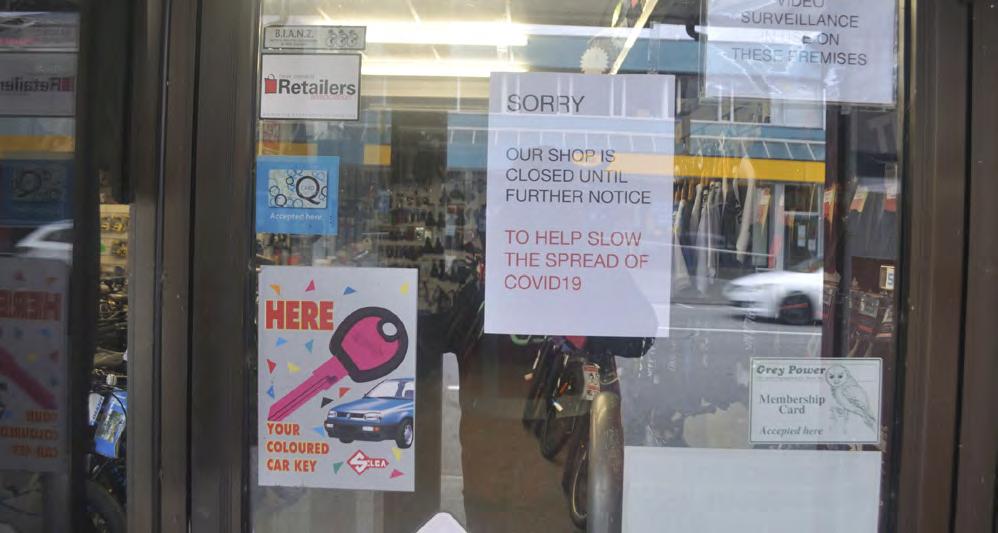
This isn’t a new justification and one I always find fascinating for several reasons.
The economy does go through cycles, so regardless of where it is at any moment, during the life-time of a business it will be exposed to an economy in both growth and decline.
Additionally, and importantly, not every business, system or industry fare the same in different periods of the economic cycle.
High on the list – if not the top reason that potential entrepreneurs use to rationalise not pursuing a franchised business – is the uncertainty around Covid-19.
I know you don’t owe any money but you are still losing your car
In 2019 I wrote an article in this publication titled “The dangers of the social media car yard”. It would appear that the point should be made again.
As a licensed repossession agent I am no stranger to the separation of debtor and vehicle. And although we always show maximum respect to all that we encounter and act with empathy at all times, it is unusual for me to have any kind of lasting emotional reaction to these situations.
Irrespective of how the debt arose if the debtors had paid their bills and/or communicated with our clients, then we would never have had to darken their doorsteps with our legal documents and sunny dispositions, so pretty much action/inaction equals consequence.
“On-Sold” repossessions are different from the above and are harder to complete without walking away with at least a modicum of sympathy for the other party.
These are repossessions where a debtor has financed a vehicle and sold it to a Third Party without either paying off the loan or informing the new owner that there is a security held against it.
Often the purchasers of these vehicles are either new entrants to New Zealand or members of a more senior and less technically savvy demographic who are unaware of the various checks that can be performed to ensure that they are not purchasing an encumbered asset.
Typically these purchasers are cash buyers as any kind of finance application would involve checking the vehicle for security registrations on the Personal Property Securities Register.
A perfect example of this happened just the other week. An elderly Waikato couple
saw a house bus for sale on a popular social media site for $18,000, which had a market value of around $25,000 based in the west coast of the south island.
They made contact with the seller and after satisfying their criteria they agreed to purchase the bus and made the nearly 30 hour round trip to collect it. As they recalled it the seller needed the funds as a deposit on a home and seemed like a “nice young couple”.
Once they had paid and returned to the Waikato all was well until they had a knock at the door and were appraised of the fact that the bus had nearly $16,000 owed against it to a major financial institution and that if they could not settle the outstanding amount in full it would be immediately repossessed.
Having spent their savings

> BY NATHAN BONNEY
Nathan Bonney is a director of Iridium Partners. He can be reached at nathan@iridium.net.nz or 0275-393-022
What is important is to understand is the history of and/or what’s likely to happen over the cycle in terms of impact on the business, system or industry under review. As we have discussed previously, some businesses do extremely well during downturns.
Unquestionably there are opportunities and risks over the entire cycle, and being worried only over a decline I would suggest is potentially myopic.
Not sure the timing is right
Absolutely, the timing to start or purchase a business needs to be right for the individual, and there are a number of factors to be taken into consideration.
However, many potential franchisee entrepreneurs fail to fully evaluate whether franchising generally or a particular business is right for them, citing the timing.
In my view, it is basically a lazy excuse for not completing due diligence. Are they addressing the real question, namely, is it right for them? Firstly, if it is truly and solely a timing issue, the buyer may return to it in the future. Secondly, due diligence can take anywhere from a month to over a year depending on the system or business so an individual’s.
And of course other circumstances could change significantly over that time.


> BY NICK KERR
Nick Kerr is Area Manager BOP for EC Credit Control NZ Ltd.
He is also a director of International Private Investigations Ltd. Nick can be reached at nick.kerr@eccreditcontrol.co.nz
on the bus, they were in no financial position to settle out the secured amount and had no choice but to clear their belongings and hand us the keys.
As we were leaving with the bus, the couple asked us “how could we have prevented this?”
Our answer was the same as the other 50 or so times we had been asked this – “a $17 online security check” – and
we left them with the details of how to do this.
With the financial aftermath of Covid-19, the rising price of housing, rates and rising business compliance costs, there has been a noticeable upswing in the numbers of financially overleveraged people that see the liquidation of their assets as being the fastest and simplest way to access funds, irrespective of what encumbrances are upon them as far as securities are concerned.
Many times these securities are for values far in excess of the value of the vehicles sale price and doing a simple online check could mean the difference between getting a great deal on a new vehicle, or having a horrendously expensive short-term ownership of a vehicle that could be repossessed at any moment. Just a thought.
A worker at one of Whakata ne’s biggest employers has warned at least half of the 200 people being made redundant will struggle to find work.
By MERIANA JOHNSEN
The Whakatāne Mill confirmed this week it will close at the end of June, a huge blow for the Bay of Plenty town.
For over 40 years, Rua Williams has worked at the Whakatāne Mill, but soon he’ll be clocking out for the last time.
The First Union delegate will retire now the mill is closing, but he’s worried about how his other colleagues will fare.
“We’ve got middle-aged people, it’s going to be difficult for them to find employment – young fullas, they should be able to make a go of it,” Williams said.
While the fitters and electricians would easily find a new job, Williams said it would be difficult for those working on the production line. But he hoped their strong work ethic would hold them in good stead.
All of the 210 staff at the mill, which makes paper and packaging products for export, will lose their jobs. Over half of them are Māori.
Williams said many were trying to find jobs now, but were faced with a tough choice.
“People are racing around looking for jobs now but the company has put out a thing that if you’re not here ... you don’t get your redundancy, so it’s a bit harsh on our workers because some of our young fullas, they’ve got to secure their futures.”
Whakatāne mayor Judy Turner said the town had been left reeling,
and the closure would affect more than just the mill workers.
“There’s all the private contractors who rely hugely on the mill for their work programme, and their workers, and the implication there and we have no sense yet of how many other jobs are going to come into question now that it’s a definite closure,” Taylor said.
The mill decided to shut down after losing its biggest customer, Swiss packaging company SIG.
East Coast MP Kiri Allan is hoping the business won’t stay closed for long. “My sincere hope is that there is a commercial party that will come to the table and see this as a prospect for the town, so that we can retain those jobs and retain that mill as an operational mill,” she said.
If that doesn’t happen, Allan was confident people would be able to find jobs on regional projects such as the new commercial boat harbour.
“Those types of industries... heavily rely on skills that are transferable from industries in the mill; welding fitting, engineering and the like,” she said.
The Minister for Economic and Regional Development, and Forestry, Stuart Nash, said closing manufacturers such as the Whakatāne Mill was not sustainable for local economies.
“We’ve got a reputation as one of the largest exporters of logs, I don’t think that’s a very good space. We want to be one of the largest exporters of processed lumber,” he said.
He’s working with companies and

My sincere hope is that there is a commercial party that will come to the table and see this as a prospect for the town, so that we can retain those jobs and retain that mill as an operational mill.”
– MP Kiri Allan
June 2021 For advertising enquiries: Pete Wales - 022 495 9248 Email: pete@bopbusinessnews.co.nz www.bopbusinessnews.co.nz/year-book
unions to reform the forestry industry.
Waiariki MP Rawiri Waititi wants to set up a “transit lounge” for kaimahi, where social services and upskilling is readily available to those leaving.
“These services will be requested and determined by them and that is what the Whānau Ora approach is, that this particular process must be driven by those kaimahi to support them and their whānau,” he said.
Local iwi are also stepping up to help.
In a statement, Te Rūnanga o Ngāti Awa chief executive Leonie Simpson said they’re finding jobs for people within iwi-led projects.
These include, Kainga, a new cultural hub and visitors centre, and Te Ara Mahi, a technical marine training school.
Ōpōtiki’s Mayor Lyn Riesterer, welcomed today’s announcement from the government about significant investment in housing in an effort to start a long-term resolution of the nation’s housing crisis.
“Just last week, I was speaking pretty candidly about Ōpōtiki’s own housing crisis – we are well above the national stats in all the worst ways and the lack of affordable and healthy housing is impacting lives and wellbeing in our community.
“And we have been working to take on this challenge for a long time. For Ōpōtiki Council, that means we have long been focussed on a few key solutions that are within our control –an easy-to-navigate regulatory envi-
Whakatane employment statistics under threat.

ronment, a District Plan that looks to encourage housing development through zoning, and careful infrastructure planning for growth coming online through many central-government funded projects such as the harbour development. We also have a role making sure that key agencies are working together and aligned to solve this complex issue,” Mayor Riesterer said.
In that vital role of bringing together the many and various agencies to bring their respective powers to bear on the housing situation in


Ōpōtiki, the Mayor was heartened to hear that Kāinga Ora are committed to 20-30 additional houses within the next 18 months on top of the upgrade of existing Kāinga Ora housing stock. This housing is an immediate priority as it is on existing, serviced land and will provide affordable housing very quickly.
“We are poised, ready and waiting to make the most of today’s announcement. We have the land, we have the services, we have a clear need and we have a council that is ready to work with housing providers in the district.
“In particular, we have a great opportunity in Hukutaia, for a greenspace development of significant size. We are actually consulting on extending reticulation to Hukutaia in the LTP [Long Term Plan] shortly so we expect this is the next priority to fill our housing need.
“Hukutaia prepares us better for the coming challenges of climate change as it is well out of the range of sea level rise and floods. It will also assist with water quality (taking many existing houses off septic tank systems); and have positive iwi out-

comes for the use of that land. Social and affordable housing benefits can be baked into the development as well.
“The Ōpōtiki Harbour and burgeoning aquaculture industry is transforming our district and we are determined not to let a lack of housing be the anchor holding back the social change this will bring,” Mayor Riesterer said.
The EMA says the announcement today that the Whakatane Mill is closing is terrible news for the management team, employees, and the wider

community.
“Our thoughts are with everyone in Whakatane today, as this is a decision that everyone was hoping would not be necessary,” says Chief Executive Brett O’Riley.
“It’s such a shame that no viable option emerged from its consultation process, and that without a buyer the only option has been for the mill to close.”
The company will cease production on June 21 with 210 employees being made redundant, followed by the decommissioning of the plant and
expected final closure on June 30, 2021.
Mr O’Riley says the EMA supports member businesses throughout the Bay of Plenty and hopes that through its involvement with the successful Rotorua-based ReTrain programme it may be able to help.
“It’s very sad to see a business that has been producing paper and packaging products for more than 80 years close because the competitiveness of its products has been eroded,” he says. “If we can do anything at all to help, we will.”
What People are saying about the Wassung Team
“They delivered us a quality product with their local & international expertise - our business is now pumping”
“So much Passion for what they do ”
“Listening and working together to achieve our awesome home ”
“Thanks for encouraging us to stay on budget and on time ”
“Our Commercial Warehouse has an architectural component that helps us stand out from the crowd. ”



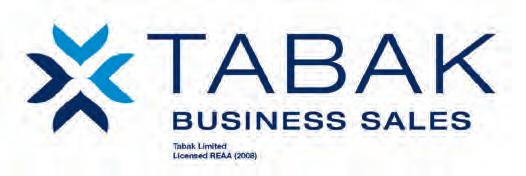
When is the right time to sell your business? Right now.
At TABAK, we promise to guide you through the sales process with focus, integrity and complete confidentiality.








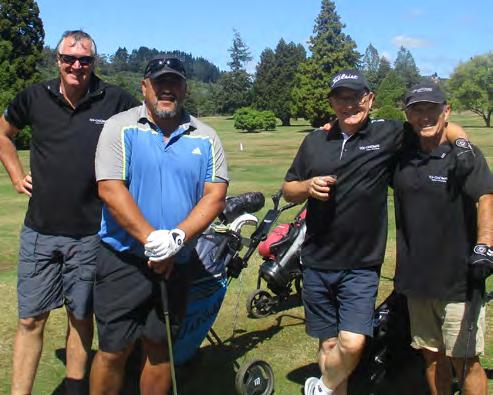
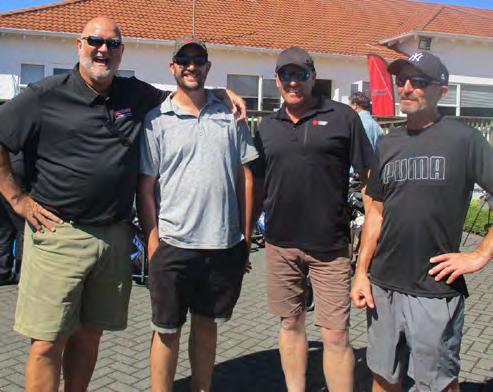

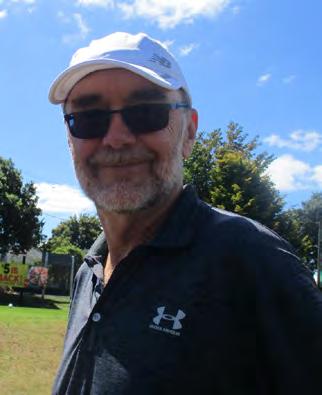

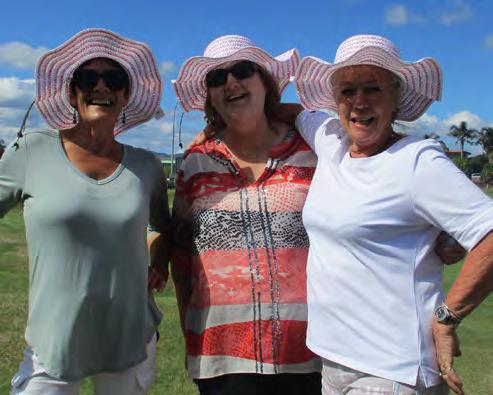

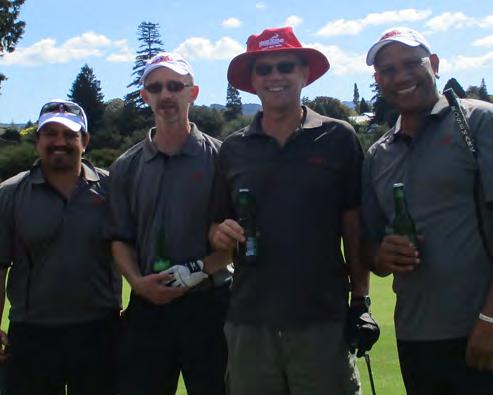


Few people in New Zealand are unaware of the impact of Daylight Savings Time (DST) – especially as we begin to transition our body clocks back the other way. And now several American states have considered doing away with the practice of changing the clocks forward or back, in favour of permanent DST, while experts around the world suggest permanent Standard Time is a better alternative for health and wellbeing.
ABy DAVID PORTER
study appearing in the journal Current Biology earlier this year puts forth evidence of another downside of DST: it increases the risk of fatal car accidents for about a week each year.
The evidence shows about a six percent increase in the risk of fatal traffic accidents in the week after the time change each Spring in the US.
In other words, more than 28 fatal accidents could be prevented yearly in the US if the DST transition were abolished. The effect is especially pronounced in the morning hours and
in locations further west within a time zone.
“The acute adverse effects of DST on fatal traffic accident risk are real, and can be prevented,” said senior author Céline Vetter (@DrCelineVetter), a circadian sleep scientist at the University of Colorado Boulder.
“Although the observed effects are of moderate size and are not long-lasting, we must not forget that DST transition affects billions of people every year, and thus small changes in risk can have a substantial public health impact.”
Since it was first introduced, the Spring transition to DST has been
linked to a variety of problems, including increased risk of heart attack, workplace accidents, and suicides. There had been evidence suggesting an increased risk of car accidents, too.
But, Vetter explained, those findings weren’t so clear-cut. In the new study, she and her colleagues, including first author Josef Fritz, set out to look deeper.
They took advantage of a large US registry, the federal Fatality Analysis Reporting System, that recorded 732,835 fatal car accidents across all US states observing DST from 1996 to 2017. Their analysis revealed a six
percent uptick in risk after the clocks changed in Spring.
In absolute numbers, they report, this risk increase translated to an additional 5.7 fatal accidents per day from Monday to Friday after the spring DST transition in the U.S. That’s more than 28 deaths during the workweek.
Over the course of the 22 years, they report, that’s more than 626 out of 8,958 fatal accidents that might have been prevented.
“The public health impact of the DST transition regarding fatal traffic accident risk is clear from our data,” Vetter said. “Because our data only
Introducing our Associate, Will Dymock. Recently arrived in the Bay of Plenty, with exceptional finance and commercial expertise.
While away from home, Will worked in a leading international firm in Singapore and brings with him a broad commercial skill set with a particular focus on aviation finance, leasing and cross-border transactions. Will further strengthens the Commercial Team at
Holland Beckett Law and enhances our service offering to clients. Outside of work, Will is looking forward to embracing the Bay of Plenty lifestyle, be it fishing, water sports or getting out on the golf course. Talk to Will today.
included the most severe accidents, namely where a fatality was recorded, this estimation is likely an underestimation of the true risk.”
The findings offer yet another reason to consider getting rid of the switch to DST, the researchers say. They now hope to understand and better characterize the effects of DST on individuals and the physiology and health outcomes associated with the “mini-jetlag” DST causes.
With such an understanding, they say they’ll be in a better position to identify the people who are most vulnerable and affected by the time change.

The recruitment landscape is changing, and challenges we have faced in the past year have expedited the current recruitment environment.
The employment market as I am experiencing it, could be compared a little to the current housing market – demand is high but stock is limited. This makes for challenging times and an employee-centric market.
One of my mantras when advising my clients, is that time is one of the most critical parts of your process – hav ing the ability to make both swift and timely decisions, but also having the time to give your recruitment process jus tice, without rushing, cutting corners and making costly mistakes.
More than ever before the cost of employing staff is ris ing, and we all know that the right staff in your organisation are your biggest asset. Using well informed information and processes to help decide which candidates will add the most value to your business – which is ultimately the most import ant thing that staff should do for you – is critical.
The beginning …
Attracting the right candidate is the critical first step. A wellworded advert will mean you have fewer “unsuitable” can didates wasting your time with applications for a role
that they were never qualified or experienced enough for.
The recruitment process starts at the very beginning with a well-worded and written advert – published in the right medium for your industry.

> BY KELLIE
HAMLETT
Talent ID are Recruitment Specialists and can support you through your recruitment process. Please feel free to talk to us about this by calling 07 349 1081 or emailing kellie@talentid.co.nz
edgement e-mail shows courtesy and maintains your employer brand.
Know what you want …
tions you receive doesn’t automatically equate to making your recruitment process easier. It actually creates more work for the employer as you have to deal with more candidates, more often than not with
Do you have a checklist that is based on the key skills and experience required for the role? Is it based on the job description you have developed for your vacancy? Do you have a job description for your vacancy? Many employers do not. How can an employee
an employees’ non performance if you have nothing that states your expectations. It’s a simple document, but it can be a costly omission.
Comparing apples with apples …
Shortlists should be made up of the best candidates who have the skills and experience that match the requirements of your role and position description. Your time is precious so you should only spend your time interviewing candidates who meet your criteria.

Interviews are important and should follow a similar process for each candidate. I advise specifically constructed questions that align with the requirements of the role. Compare apples with apples and interview each candidate on a level playing field. It will help to make your decision easier in the long run.
Do your research …
We recommend verbal contact with at least two prior employers or managers. Written and personal/character references are a thing of the past. You need to have the candidates permission (by law) to do this, and if they won’t give you the names of previous managers – ask why.
One of the biggest mistakes I see when employers do their own recruiting is not get-
ting candidates to complete an application form. This can be a simple document asking applicants to declare criminal or pending criminal convictions, licence status, referees, medical status, etc and then they sign it. You then have a comeback if any of the details supplied are incorrect. Ensure you ask the right questions.
The fine print …
Checks and balances complete, you offer the role to your preferred candidate verbally. Your offer is followed up in writing along with your up to date employment agreement –which of course you have as it’s illegal not to. If you don’t have one or it needs updating then best you talk to us asap! Don’t forget that the employment agreement needs to be signed prior to the start date, as the 90 day trial period (should you be using it) will be ruled invalid should the employment agreement be signed even an hour after work is commenced.
Inductions are important, how you start will set the scene for the future. It’s a good idea to set an induction plan for the first week of employment, covering a few key points each day.
During the first three months of employment I would encourage employers to meet with the employee monthly documenting performance and discussions. Especially if you think you may need to incite the 90 day trial period.
Right people, right place, right message, right time. It’s a frequently repeated marketing mantra – but all too often the fourth and final part of the equation is overlooked. In many cases timing is thrown by the wayside as we rush to get that new campaign out the door, particularly if we are about to head away on holiday or go home for the day.
The thing is good timing acts as an amplifier. If you sell water polo goals you’re going to generate a lot more sales if you promote them in the lead-up to summer. If you sell flowers, then your marketing needs to come into bloom in the lead-up to Valentine’s Day. Sometimes holding fire on a campaign until the most opportune time, is the way to go.
The water polo and florist examples above are examples of seasonality – the idea that some products and services will sell better at different times of year. This is a simple yet powerful concept when it comes to getting the most out of your marketing, and it’s worth delving your own sales and leads data to see how it applies to the products and services you offer. If you sell smartphones, is
the countdown to Christmas the busiest time of year? As an accountant, do you see more enquiries for new customers at the end of the financial year?
There won’t always be a clear seasonal trend for some of your products and services, but if you can identify a trend it can provide a big clue as to when you should reach out to potential customers.
If you do all of your business in the summer, you might decide to allocate the majority of your marketing budget to the warmer months. Alternatively, you might like to look at what products or services you can offer to generate income at a different time of year.
Another consideration is the time of the day you are sending out your marketing messages. This has always been important, but it matters that much more if you are engaging in digital marketing.
Email marketing platforms
MailChimp and Campaign
Monitor both report that, on average, sending marketing emails late morning on Tuesdays and Thursdays result in the best open rates. For social media, many studies suggest that marketing on Saturdays holds some merit.
As always, the right time of day to reach people depends on your target customer and the medium you are using.
If you are marketing a product to business customers, you will get more engagement if you schedule your social media, email marketing and other digital campaigns to reach your target customers in the morning or early afternoon and during the working week.
If you are marketing a consumer good, such as wine, then reaching people a bit later in the day or on the weekend may be the way to go. Not only are people more likely to be thinking about enjoying a drink at those times, but they

> BY JAMES HEFFIELD
Director of Bay of Plenty marketing and PR consultancy Last Word. To find out more visit lastwordmedia.co.nz or email james@lastwordmedia.co.nz.

also have the space to make that all important purchase in your online store.
The answer lies in your data
the key
If you sell flowers, then your marketing needs to come into bloom in the lead-up to Valentine’s Day.”
This is a story about bikes – but do keep reading. Yes. I know – there is a sizeable constituency of readers who will already have tuned-out, convinced this will just be “bearded, greeny bike propaganda”. I promise this is not a case of four wheels play two conversion therapy – I’m just trying to figure out what all the fuss is about.
Each year nearly 2 million people use the 22 Great Rides of Ngā Haerenga New Zealand Cycle Trails (NZCT) – that’s a lot.
As well as offering a world-class visitor experience, the trails create ongoing job opportunities and economic, recreational and health benefits for New Zealanders.
Locally in every part of the country, planners and developers are incorporating cycleways into their landscapes –but rarely without some degree of controversy or derision.
The New Zealand Cycle Trail network is made up of Great Rides (off-road trails), Heartland Rides (on-road rides linking towns and attractions) and Urban Cycle Trails (on and off-road trails to cycle safely through urban zones).
But, “How many people are actually using the Great Rides,” you ask?
• Over the 12 months from 1 March 2019 to 28 February 2020, there were 1,985,600
trips on the New Zealand Cycle Trail Great Rides (compared with 1,300,000 estimated trips in 2015).
• 1,025,000 of these trips were by pedestrians.
• 960,200 of these trips were by cyclists.
• The Hawke’s Bay Cycle Trail was the most popular, at 188,000 cycle trips and 220,000 pedestrian trips for the year.
• The venerable Otago Central Rail Trail recorded 68,000 trips, with 13,000 of these being people riding the full trail (similar to 2015).
Yet I still hear the angry mutterings, “We spend all this money on cycleways and no-one uses them”. Well, that’s not really true.
This is probably more vexing to the “cycle-change deniers”, the visibly under-patronised cycle lane running beside their busy motorway. The problem of course is the classic Kentucky Fried

> BY ALAN NEBEN
Alan Neben is a Mount Maunganui local and experienced New Zealand publisher. He now mainly rides a bike. alan@bopbusinessnews.co.nz

Omelette conundrum – build it and they will come, or should we wait until they come and then build it? We’ve elected to build it.
The plan, of course, is for the Urban Cycle Trails to connect to the Heartland Rides to connect to the Great Rides – until those dots are all joined and the peddling public doesn’t have to take off
their bicycle clips and hitch a ride on a monster carbon footprinted diesel off road 4x4 to finish their bike journey, then the model doesn’t really work.
We have elected to build cycle lanes to join the dots – so in the immortal words of Sir Michael Cullen, “We won, you lost, eat that!” Luxury and Lifestyle –
what’s the connection? Well, biking and owning a bike is no longer just meeting a utilitarian need: Ebikes have become an industry in themselves, Lycra no longer makes us think of Jazzercise and anyone who wants to be a truly successful mortgage broker nowdays has “gotta get amongst it” with their own peloton.
The well-heeled amongst us now have the new “musthave” – an ebike. To those of you who number amongst them, I say, “well done you.” BTW, my google search for the highest priced ebike on the local market tipped the scales at a mouthwatering $12,399 –I’m not sure what emoji to use with that number? Message me if you can top that.

With power that cannot be contained, the BMW M3 and M4 deliver an unmatched level of exhilaration. Get reacquainted with the legends, the BMW M3 and M4. Visit Coombes Johnston BMW Tauranga to find out more.











